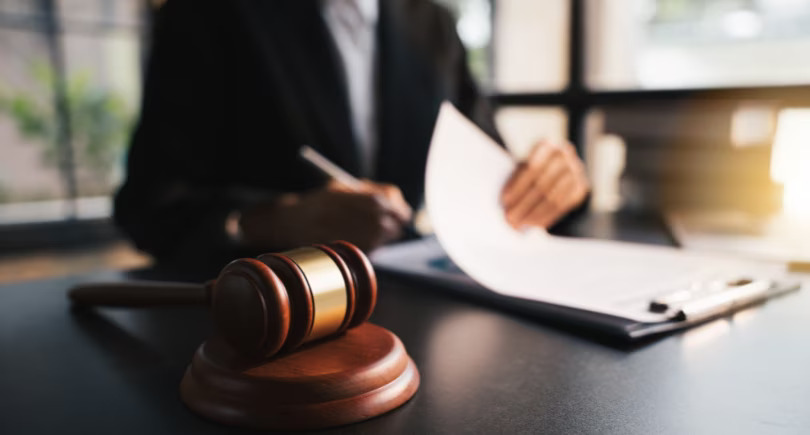
Consumer bankruptcy protection laws are designed to help indebted people rise above their stressful financial circumstances. Chapters 7 and 13 are the two most common forms, but though they share some of the same elements, they are really quite different.
Here are the basics of both types of bankruptcy, including what makes each unique. Whichever you use, consider our recommended steps to rebuild your credit afterward and avoid having to file again.
What is Chapter 7 bankruptcy?
Often referred to as a “straight bankruptcy,” a Chapter 7 allows qualified filers to have many types of unsecured debts formally discharged in court. These typically include:
- Credit card balances
- Personal loans
- Collection accounts
- Medical bills
- Payday loans
Imagine the relief of walking away from all that debt! However, you can’t discharge other types, such as:
- Taxes owed to the IRS or the state
- Most government fines, such as traffic and parking tickets
- Owed child and spousal support
- Most student loans
- Secured debts, such as car loans and mortgages
You also have to qualify for a Chapter 7 bankruptcy, and not everyone does.
First you have to pass the means test. If your income is at or below the median for your state, you pass and can move on to filing. If not, you will have to complete paperwork listing your income, assets, liabilities, and expenses. You may be allowed to file if it’s clear that you do not have enough money to manage your debt payments.
But that’s not all. If you own property and have assets, you may have to forfeit them to satisfy your creditors. What you get to keep depends on whether or not the value exceeds state exemption rules.
If you can file and want to proceed, you will then go to bankruptcy court. In the event that the judge grants the Chapter 7 bankruptcy protection, the debts that you included will be discharged. The process typically takes a few months, from start to finish. Although many Chapter 7 filers use an attorney, it is also possible to do it yourself.
What is Chapter 13 bankruptcy?
Chapter 13 of the federal bankruptcy code, on the other hand, allows you to pay your debts through the court, over three to five years. You would do a 36-month plan if your gross income is under the median income for your state, and a 60-month plan if it’s above that figure.
You can include the debts you couldn’t in Chapter 7 as well as those that you could discharge.
Other benefits include:
- One payment, managed by a trustee
- Payments may be lower than what you had before
- Interest and fees stop accruing
- If your home was in foreclosure due to missed payments you can keep it and pay what you owe through the bankruptcy
- The portion of unsecured debt that remains after the bankruptcy ends can be discharged
- You can keep all of your assets and property
There are drawbacks too, of course:
- It can be a long and complicated process, so you will usually need to hire a lawyer
- You have to pledge your available income to your creditors, so if you get a raise your payments may increase
- You may have to give up luxuries, such as private school, vacations, and expensive hobbies
To qualify for a Chapter 13, your income must be both steady and sufficient.
Differences between Chapter 7 and Chapter 13 bankruptcy
Chapter 7
Chapter 13
Credit Report
On credit report for 10 years from filing date
On credit report for 7 years from filing date
Goal
Goal is to discharge debt
Goal is to reorganize debt + discharge debt
Property
Can lose property
Can’t lose property
Payments
Must prove you can’t repay the debt
Must prove you can make the payments
Completion
Completes in a few months
Completes in 3 or 5 years
Attorney
An attorney isn’t necessary
An attorney is usually necessary
Can you get a credit card before the bankruptcy is discharged?
Credit cards are valuable and convenient payment tools, but if you are including credit card balances in your bankruptcy, those accounts will be closed.
While you’re in the process of going through the Chapter 7 bankruptcy, you are not supposed to open any new credit cards. The intention of a Chapter 13 bankruptcy is to pay your existing obligations, not get into more debt. For this reason you are not permitted to enter into any new credit contracts unless approved by the court.
➤ SEE MORE:Can you get a credit card after filing for bankruptcy?
How soon can you apply for credit after filing chapter 7?
There is no waiting period to apply for a credit card after a Chapter 7 bankruptcy goes through. And if you want to rebuild your credit, which will be greatly impacted by the bankruptcy, it’s usually a good idea to start building your credit again by responsibly using a credit card.
Just be aware that you may have to restart your credit history with a secured credit card or one with a very low credit limit.
➤ SEE MORE:Should you get a credit card after bankruptcy?
Does getting denied for a credit card hurt your credit?
The credit issuer will notify the credit bureaus that you have applied. A hard inquiry will be placed on your credit file and be factored into your credit score. Although “new credit” is a relatively minor credit scoring category compared to payment history and credit utilization, when your score is already damaged from the bankruptcy, it can have greater weight.
Yet while the notification that you applied will be factored into your score, you will not be penalized for a denial.
➤ SEE MORE:Credit card application denied? Next steps to consider
How to rebuild credit after bankruptcy
Once you do get a credit card in your name, you can use it to your credit scoring advantage.
The date the credit card was granted will show up on your report, as well as the amount of your credit line. As long as you charge regularly, make all payments on time, and keep the debt to well below the limit (paid in full is best) you will be feeding your credit report positive information.
As the months go by with this type of data being recorded, your score should steadily rise. The bankruptcy will continue to show up, as well as the discharged accounts, but evidence that you are treating this new card responsibly should work in your favor.
Eventually, your credit score should improve enough so that you qualify for an unsecured credit card or one with a higher limit. If you feel comfortable taking out a new credit card at that stage and using it the same way, your credit scores should increase even further. Then, by the time your bankruptcy is removed from your credit reports, your credit file will show plenty of attractive activity, resulting in an overall improved credit score.
➤ SEE MORE:Best credit cards after bankruptcy


